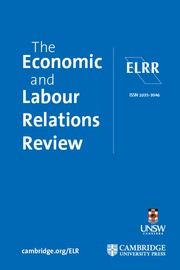No CrossRef data available.
Article contents
Labour market segmentation, self-employment, and Hukou reform
Published online by Cambridge University Press: 08 November 2024
Abstract
This study aims to examine the impact of the Hukou system, a labour mobility-restricting institution, on the decision to engage in non-agricultural self-employment in China, reflecting the dynamic process of labour transition from contractual work to self-employment within the country’s evolving labour market. By using the China Family Panel Studies (CFPS) dataset, the results show that urban migrants, who own rural Hukou but migrate to large cities, are more likely to turn to self-employment than local citizens conditional on individual characteristics. Taking advantage of the 2014 Hukou reform, we provide supporting evidence that Hukou discrimination is a key factor in explaining the higher self-employment rate among representative urban migrants. Further heterogeneous analysis suggests that low-income migrants experience greater constraints imposed by the Hukou system, while high-income level migrants are more likely to turn to self-employment voluntarily.
- Type
- Original Article
- Information
- The Economic and Labour Relations Review , Volume 35 , Issue 3: Dedicated to Dr Tanya Carney – collegial scholar , September 2024 , pp. 730 - 748
- Copyright
- © The Author(s), 2024. Published by Cambridge University Press on behalf of The University of New South Wales


